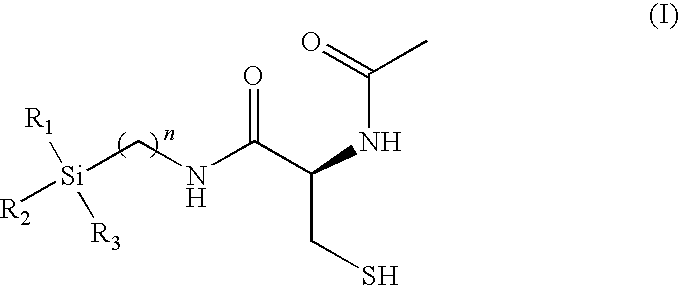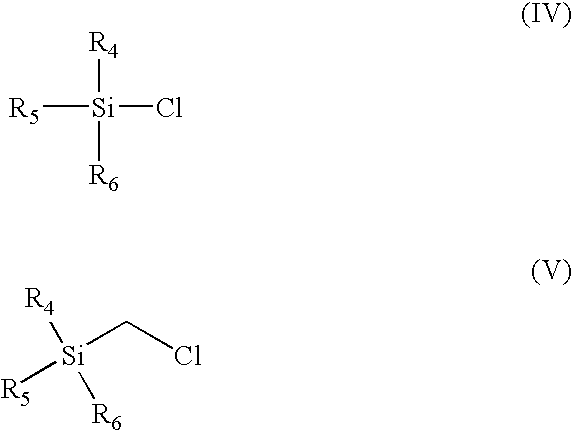Pharmaceutical compositions and methods of use of highly lipophilic sulfhydryl compounds
a sulfhydryl compound and pharmaceutical composition technology, applied in the field of lipophilic antioxidant compounds, can solve the problems of triggering apoptosis, affecting the bioavailability and half-life of drugs, and affecting the normal physiological process involving limited tissue injury, etc., to achieve the effect of improving drug bioavailability and half-life, enhancing pharmacokinetics, and modifying metabolism
- Summary
- Abstract
- Description
- Claims
- Application Information
AI Technical Summary
Benefits of technology
Problems solved by technology
Method used
Image
Examples
examples
[0121]Reference is now made to the following example, which together with the above descriptions illustrate the invention in a non-limiting fashion.
example
(R)-2-acetamido-3-mercapto-N-(3-(trimethylsilyl)propyl)propanamide
[0122]Chemical formula: C11H24N2O2SSi: (molecular weight of 276.47): C, 47.79; H, 8.75; N, 10.13; O, 11.57; S, 11.60; Si, 10.16. (R)-4-carboxy-3-acetyl-2,2-dimethylthiazolidine. A suspension of N-acetyl-R-cysteine (1.0 g, 0.006 mol) and montmorillonite K10 (0.2 g, 20 wt. %) in 40 mL of anhydrous acetone / 2,2-dimethoxypropane (1:3) mixture was stirred at room temperature for 3 h. The reaction mixture was then filtered, and solvent was evaporated to give (R)-4-carboxy-3-acetyl-2,2-dimethylthiazolidine (1.03 g, 84% yield) as a white solid (90% pure by 1H NMR spectroscopy), which was used for the next step without further purification.
[0123](R)-4-(trimethylsilyl)propyl)amide-3-acetyl-2,2-dimethylthiazolidine. A solution of (R)-4-carboxy-3-acetyl-2,2-dimethylthiazolidine (1.03 g, 0.005 mol) and triethylamine (0.7 mL, 0.005 mol) in 20 mL of dichloromethane was cooled to −5° C. and a solution of ethyl chloroformate (0.5 mL, 0...
PUM
| Property | Measurement | Unit |
|---|---|---|
| temperature | aaaaa | aaaaa |
| temperature | aaaaa | aaaaa |
| pharmaceutical composition | aaaaa | aaaaa |
Abstract
Description
Claims
Application Information
 Login to View More
Login to View More - R&D
- Intellectual Property
- Life Sciences
- Materials
- Tech Scout
- Unparalleled Data Quality
- Higher Quality Content
- 60% Fewer Hallucinations
Browse by: Latest US Patents, China's latest patents, Technical Efficacy Thesaurus, Application Domain, Technology Topic, Popular Technical Reports.
© 2025 PatSnap. All rights reserved.Legal|Privacy policy|Modern Slavery Act Transparency Statement|Sitemap|About US| Contact US: help@patsnap.com



